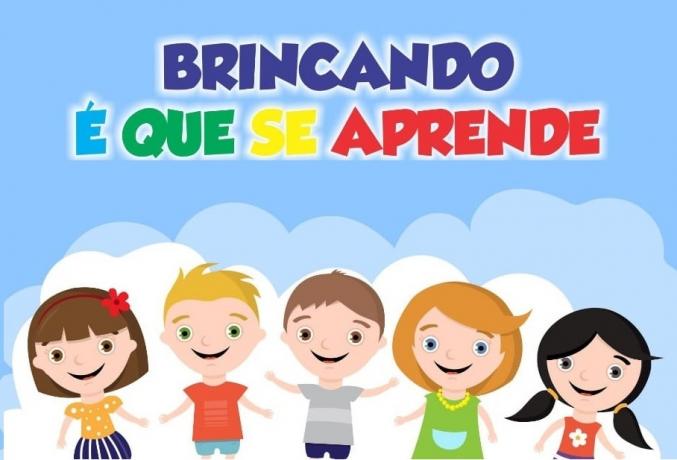We've gathered in this post several suggestions and ideas for Mathematics Projects nominated for students of the 5 (fifth) year of elementary school.
Excellent suggestions for working with your students. Maybe it might be interesting for you:Annual planning 5 year of Mathematics.
By browsing our site you can view and use several project templates for free, which can be viewed clicking here.
Check out some project suggestions for working math in the classroom:

Promote playful activities, showing that math can be fun and solving math problems can provide pleasant moments that provide opportunities for experiencing situations that require solidarity and companionship between students.
To access the material in PDF, check the following link and download:

Goals
Cross themes
Work and consumption:
Knowledge of labor relations at various times is important to understand their historical dimension and compare different modalities of work, such as community, serfdom, slavery, free work, salaried work, work in the urban space and rural.
Take a critical stand in relation to consumerism, advertising messages and sales strategies. Recognize how the process of insertion into the labor market is, identifying problems and possible solutions.
Inform more about child labor.
Material to be used
Propose the following questions to arouse student curiosity:
What is the money used for? Why was it created?
Where are banknotes and coins made?
How are your sizes and colors?
What was money like back then? Has he always been like this, with the same value, size, color etc?
What are Brazilian banknotes and coins?
Do you know the name of the currency used in other countries?
Propose a visit to a bank, if possible at the Central Bank (where all the city's banks have a bank account).
At the Central Bank, the visit is monitored by visitors, with a video showing the functioning of the Central Bank, since it was created until today, and the necessary care with our money.
There is also the Museu de Valores do Banco Central, with the exhibition entitled “Money in time”. In the exhibition, you can see coins and banknotes from other countries.
Explore the observation of what the museum is like, and then it becomes an exhibition of ancient money research.
Money, in whatever form, is not worth for itself, but for the goods and services it can buy. The currency was not invented, but it arose out of a necessity; and its evolution reflects man's will to adapt his monetary instrument to the reality of his economy.
Propose that students bring candies, chewing gum, chocolates, etc.
Enter the requirement for different values for each type of merchandise.
Paper money can be made so that students can create a “canteen”, stipulating the value of each item. By preparing the goods and selling them, students understand what profit, loss, change, etc. is.
Art: Making paper money and drawings.
History: Research on money through the ages.
Portuguese: Elaboration of posters and price lists for the canteen.
To collaborate with the 5 year math projects, it is also interesting to check out some educational and fun math activities:
All math activities are organized on here. But they can also be searched by year, the 5 year math activities, they are on here.

Goals
Cross themes
Ethic: dialogue, mutual respect, solidarity.
Environment: observation of the weather.
Cultural plurality: different ways of transmitting knowledge and different cultures. Citizenship: individual and collective rights and duties.
Material to be used
Awaken in the student the importance of measurement units in our lives:
• What day of the week is today?
• How many days are left until the weekend?
• What month and year are we in?
• How long has it been since you were born?
Report that, since ancient times, humanity has realized that the sun appears and hides on the horizon every days, that the Moon changes its aspect at certain times and that there are times of the year with colder days and others more hot. Therefore, he was concerned with determining measures for time.
Men relied on agriculture: soil preparation, planting, growing and harvesting crops.
Ask students to bring a watch to the next class.
By observing the different types of clocks brought to the class, ask them to compare, formulate hypotheses and identify the characteristics of your watch: what represent the numbers, the hands, the colons, the zeros etc.
Display a digital and analog clock drawn on card stock in large sizes to make discoveries together with the students.
Record all findings and differences between clocks in the notebook.
Making the class calendar. Ask students to look at the calendar they brought and respond:
Post the class calendar on the wall so that students can observe the change each day.
Record your findings in your notebook and make a calendar with students for each.
Provide an exhibition of clocks, with antique clocks and their evolution through the ages, requesting research materials for students.
Also display the calendars made by them.
Art: making the calendar.
History: evolution of time measurement instruments through texts and photos.
Portuguese: reading and writing time measurements.
Sciences: Earth movements.
Computing: internet searches on the topic.
PE: work out the duration of the games: football, basketball, etc.
Goals
Cross themes
Ethic: Dialogue, mutual respect, justice, responsibility, cooperation, organization and solidarity.
Cultural plurality: Development of the ability to use more and more mathematical concepts in everyday life. Collective work. Sharing of findings. Vision of the world in different cultures, historical moments and peoples.
Material to be used
Awareness: Geometry requires a specific way of reasoning, exploring and discovering, factors that play an important role in the child's conception of space. In early childhood education classes, the logical blocks, small geometric pieces, are very efficient for students to exercise logic and evolve in abstract reasoning. They make life easier for students in future encounters with numbers, operations, equations and other concepts in the discipline. Its function is to give students ideas of the first logical operations, such as matching and sorting.
Exercises with logic blocks can extend throughout the entire program of the year, always interspersed with activities that use other types of teaching material, such as golden material or Cuisenaire.
A logic block game contains 48 pieces, divided into:
The pieces can be made of wood or cardboard, without standardized measurements. You will be able to make the material with your students on cardboards.
free game First, promote recognition of the material. Ask students to form drawings with the shapes of the logic blocks, observing and comparing colors, sizes, and shapes. This work can be done in groups, as the students, through dialogues, will enrich their knowledge of the physical characteristics of each block.
ranking game
Present a board for the children to sort the blocks.
a) the four shapes: circle, square, rectangle and triangle;
b) both thicknesses: thick and thin;
c) both sizes: small and large; d) the three colors: yellow, blue and red. Create with them the attributes that will be given to the existing block types.
Make a cardboard frame. Choose some attributes (shapes, thicknesses, sizes or colors) and ask students to separate the blocks according to the chosen attributes. First, choose only one attribute (square).
Example: only separate the square pieces. Then add attributes (red, thin, small). Students will complete the board with the small, thin, red square piece.
Game: Who has the piece?
Ask each student to choose a logical block. The teacher will choose one of the pieces, without telling the students what it is. This will be the piece that must be guessed. Then present a chart with two columns.
Assuming that the chosen tile is a small, blue, and thick triangle, you will put only the first attribute on the board and ask: — Who has the blue tile? All students who have the blue pieces will place them on the board. Then give another tip: — Who has the triangular-shaped piece?
Whoever has placed the piece that is not triangular must go to the board and remove it. The exercise continues with the other attributes until only the piece that was chosen remains.
Activity stimulates more than visual comparison. It also exercises the sensory comparison between the attribute and the piece that the child is holding. You can also make a second column, the negation column (pieces that are not of color, size, thickness or shape request), which leads to classification and helps to understand, for example, that a number belongs to a numerical set, not the other.
Divide the class into groups and spread the logic blocks across the floor.
To find out what the piece is, the children will have a competition. Give a command of the characteristics of a part (for example, yellow, triangle, large and thin) to a group.
Then, the group must search and select the corresponding piece to show it, as quickly as possible, to the other teams.
The competition may aim to see which group finds the correct piece first or which group finds the most correct pieces. As you get it right, you receive a score.
Another option is to have each team challenge the other groups in the class, distributing the attributes themselves.
the difference game
In this game, students will observe three pieces on the board. Example: 1 – triangle, yellow, thick and large; 2 – square, yellow, thick and large; 3 – rectangle, yellow, thick and large.
They should choose the fourth piece (circle, yellow, thick and large), noting that between it and the piece next door there must be the same number of differences between the other two pieces of the board (the difference in the form).
The pieces will be placed by the teacher so that, in the first place, there is only one difference. Then two, three, and finally four differences between the pieces. Students will make comparisons faster and faster when they are thinking of the piece that fits all conditions.
Game: The master sent
Students must find the piece that obeys the sequence of commands established by the teacher.
The sequence can be started with the attributes: circle, blue and thick. Students will choose the corresponding piece.
The next command is to change to red color. They will select a thick red circle.
Then they should change to thin thickness. Then a thin red circle should be selected. The teacher will be able to continue adding commands, or present a ready-made sequence.
Then do the reverse process. Students will be presented with a new sequence of commands, with the last piece.
They will have to reverse the commands to get to the starting piece. The activity is essential for understanding arithmetic operations, especially addition as an inverse of subtraction and multiplication as an inverse of division.
Organize an exhibition of the works.
Art: Making logical blocks and drawings. I work with logical blocks when creating dashboards.
History: Research on geometric designs, which are widely used in works of art and construction.
Computing: For elementary school students, draw logical blocks on the computer using the Logo programming language; makes learning much more effective.
PE: Students will be able to observe all the lines on the basketball court and compare them to geometric figures.
Get access to the material by clicking here:
Subscribe to our email list and receive interesting information and updates in your email inbox
Thanks for signing up.